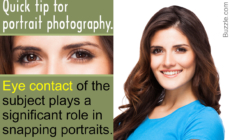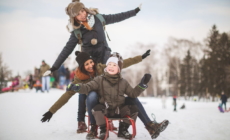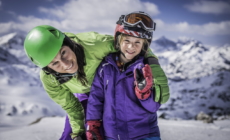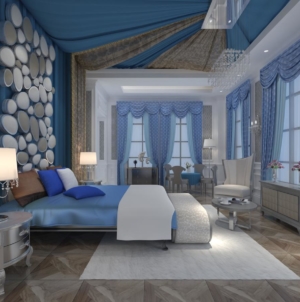-
Cool Picture Effects - September 4, 2018
-
Portrait Photography Tips That’ll Add a WOW Factor to Your Photos - September 3, 2018
-
Photography Tips for Taking Awesome Pics on Your Digital Camera - September 2, 2018
-
Fashion Photographer Salary - September 1, 2018
-
How to Set Up a Quick DIY Photo Booth in No Time - August 31, 2018
-
Do Not Miss These Tips for Shooting Stunning Black and White Photos - August 30, 2018
-
Epic Senior Picture Ideas That’ll Help You Cherish Your Memories - August 29, 2018
-
Incredibly Creative Poses for Family Photos - August 28, 2018
-
Get the Perfect Snap of Your Newborn With These Photography Ideas - August 27, 2018
-
Newborn Photography Poses That Capture the Special Moment Perfectly - August 26, 2018
Explore Your Passion for Night Photography With Simple Techniques

Want to take some beautiful night shoots? Keep reading to learn interesting night photography techniques to capture the moon, fireworks, night portraits, blurred traffic lights, etc.
Night photography can be a bit challenging because of the less amount of light that is available to us; therefore, one often faces the problem of the picture containing a lot of noise. With some effective settings and the right equipment, one can get to do some amazing photography at night.
Here is a beginner’s guide to photography with techniques for shooting night subjects such as the moon, fireworks, traffic lines, and night landscapes.
How to Shoot the Moon

For this technique, you will need at least 300 mm zoom lens.
- Secure the SLR on a tripod, on a wide base.
- Use these manual settings on the SLR: ISO 100, aperture at f/9, exposure at -5 or less and vivid picture quality. Keep the sharpness at a max and the white balance on automatic.
- Switch on the self-timer for 10 seconds.
- Never shoot without a tripod as you might end up blurring the picture.
- Zoom out the lens to its full capacity.
- Start shooting using auto focus initially, and later experiment with manual focusing. You can also experiment with the setting at maximum focal length.
- Take some shots and check how they have turned out.
How to Shoot Fireworks

Techniques for night photography of capturing fireworks is easier than you think, but it is important that you get a place from where you can frame your shot nicely. With different shutter speeds, one can always make the fireworks look sharp or achieve different blur effects.
- Arrive early before the fireworks show, and select a place from where you can compose your shot properly.
- Mount your camera on a tripod.
- Set your camera for 4 – 5 seconds of exposure, and aperture at f/8.
- Switch off the camera’s flash, and set the ISO on 50 or 100.
- Zoom out and compose your frame.
- Set the timer and start shooting.
- Check how the shots look, and later experiment with different shutter speeds.
How to Shoot a Night Landscape

Some of the best subjects for night landscapes are city landscapes (it looks even better if the city landscape is reflected in a water body), a farmhouse, a stream or river, trees and cottages, etc.
- The first thing is to compose your subject; for example, try to go for a low dynamic angle of a lit-up building with a road, or buildings reflected in the water.
- Mount your camera on the tripod well and switch off the flash.
- Use manual settings of ISO at around 100, exposure of 4 seconds and aperture at f/9 .
- Set the self-timer or use the remote control.
- Start shooting. One can always take multiple shots if the camera is digital.
- Take a look at your cityscape pictures and experiment with different shutter speeds and composition. You can also try out the cityscapes in black and white photography setting.
How to Shoot Traffic Lines

This is one of the long exposure techniques. Climb up a bridge to get a top angle of a road or highway.
- Fix your camera on the tripod, and compose your shot well.
- Switch off the flash, and manually set the camera aperture at f/9, exposure at around 20 seconds, and ISO 100.
- Keep the white balance on auto and with a self-timer or remote, start shooting the subject.
- Check your images for the results, and experiment with different exposure times.
How to Shoot a Night HDR

This is similar to day HDR (High Dynamic Range) technique, but capturing HDR is very interesting, as the final result gives a picture a very dramatic-surreal look. Some subjects for clicking night HDR are landscapes. Make sure you have the sky in your frame or a landscape with river, water bodies, etc.
- You absolutely need a tripod for capturing a day or night HDR.
- After setting the camera, select AEB (Auto Exposure Bracketing) setting of -2, 0 and 2.
- Compose the scene, and start shooting.
- If you don’t have the AEB setting, then mount the camera on a tripod. Very carefully without moving the camera or tripod click, three pictures on exposure setting of -2, 0 and 2.
- Open these pictures with a software like Photoshop CS-2 or CS-3, or a HDR rendering software and merge the three pictures together.
- Experiment with the different brightness, contrasts, hue and saturation settings, to make the sky look purple or orange.
Tips for Nocturnal Photography
Here are some tips to make your shots using the above techniques for photography at night look better.
- A tripod is essential, so always use one for night photography. If you don’t have one, then invest in a decent one if you want to take some good night pictures.
- Keep the ISO at around 100 to reduce the noise.
- Try to shoot on a full moon night, so that there will be more light.
- Check the weather forecast, so that you don’t get caught in a rainy situation with your expensive photography equipment.
- Do not be sad, if you don’t own a SLR. Try to experiment with the different exposure triangle settings in your camera, of ISO, shutter speed and aperture, and take pictures with the above digital photography techniques.
- When you think you need a better camera for digital photography, borrow from your friends and use different models and then buy a good DSLR for yourself. The rates have recently dropped, and one can always buy a DSLR on EMI, if that is a practical and viable option.
These were some of the interesting photography tips and techniques of low light or night photography. To learn some more such techniques, visit popular photo sharing sites and look for the pictures you like and would like to shoot. After selecting the picture, click on more properties of the picture and you will get all the settings on which the person has captured the picture. Some more interesting subjects for nocturnal photography are city skylines, a street with or without cars, abandoned old buildings, nightlife or concerts, amusement rides, silhouettes of birds or trees, etc. So good luck and keep shooting!





































